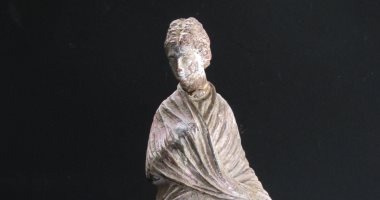Tracutta statues reached the peak of their spread and fame in the Hellenistic era in the fourth century BC, when Alexandria was the most important production centers as well as Fayoum, and these statues were characterized by agility and beauty, the accuracy of hairstyles, bright colors and cheap costs, as they are small in size and are made of local clay, and the statues of Tracotta are men, children and animals only The vast majority of her represents a woman or a young woman wearing a cloak with many folds and folds and has a close link to religious beliefs in that period.
Treakotta statues of burned clay were made; And it appeared in Egypt late, under the influence of the Greek civilization, and this industry began in Egypt, by the Greeks in the sixth century BC, where its center was in the city of Naqqais, the “Abi Qir region currently” in the Delta.
And Tarshotta is the term usually used for pottery sculpture, as well as for various practical uses including utensils (especially flower utensils), water pipes, sewage, ceiling tiles, floors, bricks, and decorating roofs in the construction of buildings.
The term is also used, to refer to “natural brown orange”, which is very different from many types of clay..

